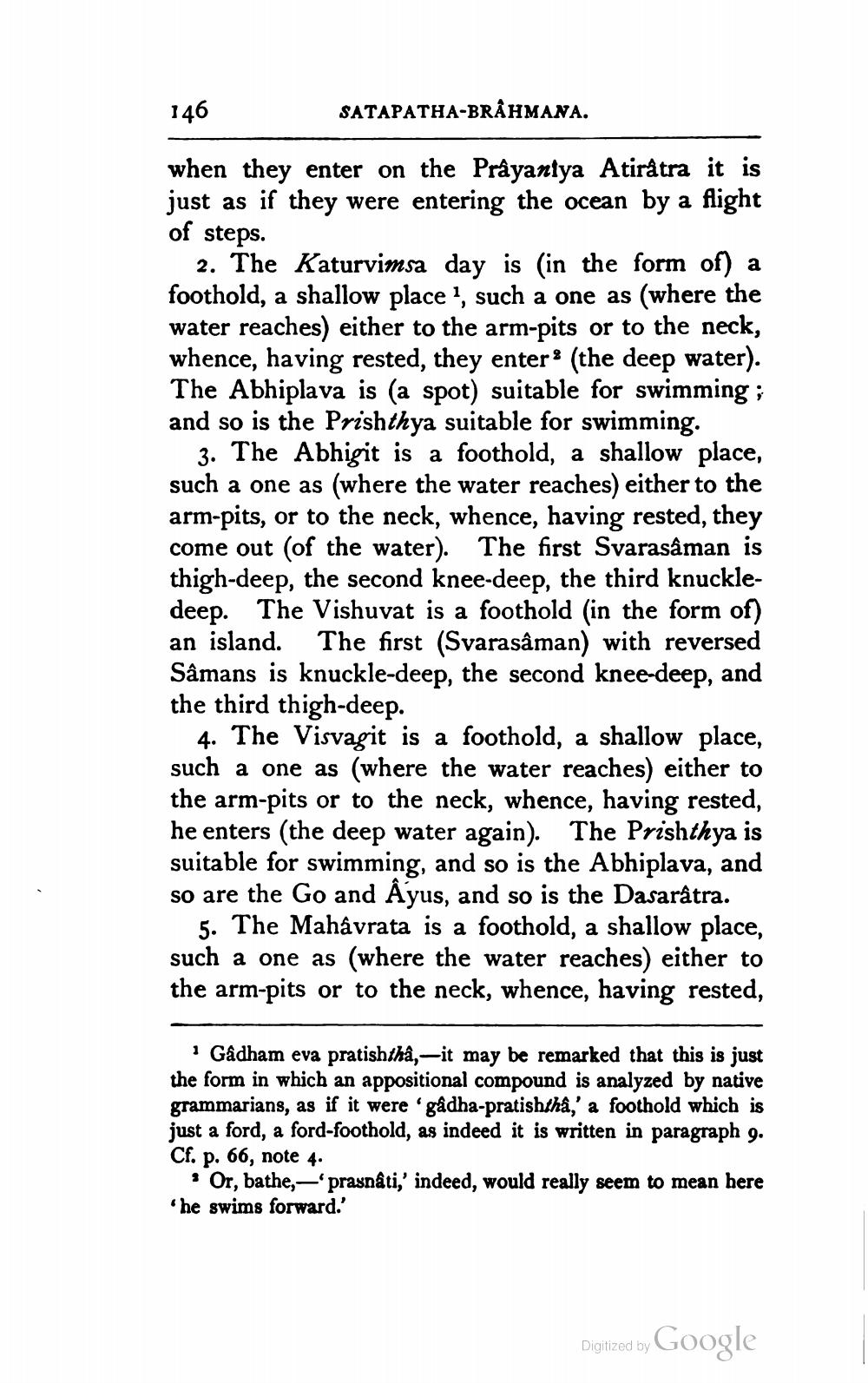________________
146
SATAPATHA-BRAHMANA.
when they enter on the Prayanlya Atirätra it is just as if they were entering the ocean by a flight of steps.
2. The Katurvimsa day is (in the form of) a foothold, a shallow place, such a one as (where the water reaches) either to the arm-pits or to the neck, whence, having rested, they enter (the deep water).
The Abhiplava is (a spot) suitable for swimming ; and so is the Prishthya suitable for swimming
3. The Abhigit is a foothold, a shallow place, such a one as (where the water reaches) either to the arm-pits, or to the neck, whence, having rested, they come out (of the water). The first Svarasâman is thigh-deep, the second knee-deep, the third knuckledeep. The Vishuvat is a foothold (in the form of) an island. The first (Svarasaman) with reversed Sâmans is knuckle-deep, the second knee-deep, and the third thigh-deep.
4. The Visvagit is a foothold, a shallow place, such a one as (where the water reaches) either to the arm-pits or to the neck, whence, having rested, he enters (the deep water again). The Prishthya is suitable for swimming, and so is the Abhiplava, and so are the Go and Ayus, and so is the Dasarâtra.
5. The Mahâvrata is a foothold, a shallow place, such a one as (where the water reaches) either to the arm-pits or to the neck, whence, having rested,
i Gadham eva pratishtha, -it may be remarked that this is just the form in which an appositional compound is analyzed by native grammarians, as if it were 'gadha-pratishtha,' a foothold which is just a ford, a ford-foothold, as indeed it is written in paragraph 9. Cf. p. 66, note 4.
• Or, bathe,—“prasnâti,' indeed, would really seem to mean here he swims forward.'
Digitized by Google




